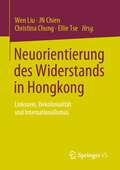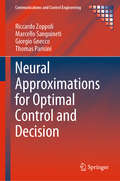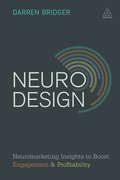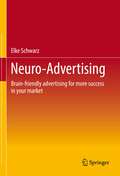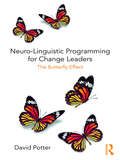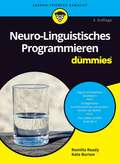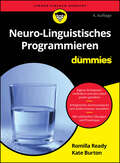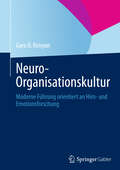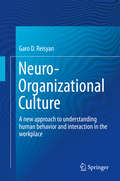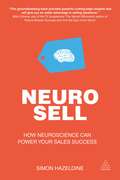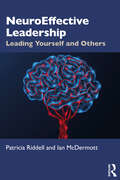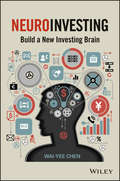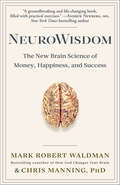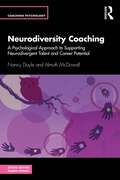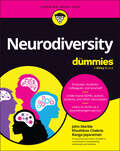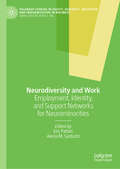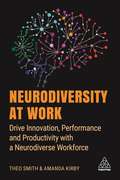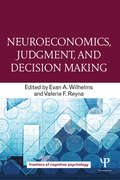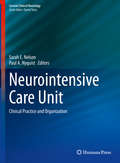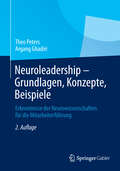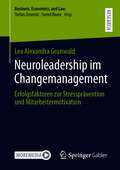- Table View
- List View
Neugierig altern und gut leben: Offen – lebendig – lebensfroh
by Sven SeiboldSie leben 20 Jahre länger als frühere Generationen. Dieses Sachbuch hilft Ihnen, die gewonnenen Jahre zu nutzen und Ihr Leben im Alter aktiv zu gestalten. Unterscheiden Sie zwischen den Veränderungen, die Sie aktiv beeinflussen können, und solchen, an die Sie sich geschickt anpassen sollten. Ihre Lebensqualität im Alter ist höher, wenn Sie bewusst entscheiden, was gutes Leben für Sie persönlich bedeutet – jenseits von gesellschaftlichen Störfeuern wie Jugendwahn oder Altersdiskriminierung. Das Buch hilft, im Alter lebendig, neugierig und lebensfroh zu bleiben. Aus dem Inhalt: Versöhnen Sie sich mit Ihrer Biografie – gehen Sie respektvoll mit sich um. Orientieren Sie sich an positiven Vorbildern – gutes Altern kann man lernen. Bleiben Sie neugierig – lassen sich von den Chancen des Alters inspirieren. Steigern Sie Ihre Lebensfreude im Alter. Seien Sie fürsorglich zu sich – bleiben Sie körperlich, geistig, emotional und sozial gesund. Treffen Sie wichtige Entscheidungen selbst. Über den Autor: Sven Seibold ist Psychologe und Professor für Wirtschaftspsychologie an der Hochschule Hannover. Seine Arbeitsschwerpunkte sind Entscheidungen, Stress und Persönlichkeit. Er interessiert sich dafür, wie Menschen denken und fühlen, sowie dafür, warum sich Menschen so oft irrational verhalten und wie man das verändern kann. In vielen seiner Arbeiten geht es um Unterschiede zwischen Menschen und darum, wie Menschen lernen, klug zu entscheiden und sich an Veränderungen geschickt anzupassen.
Neuorientierung des Widerstands in Hongkong: Linkssein, Dekolonialität und Internationalismus
by Wen Liu Jn Chien Christina Chung Ellie TseDieses Buch versammelt Beiträge von Aktivisten und Wissenschaftlern, die sich mit linken und dekolonialen Formen des Widerstands befassen, die in der aktuellen Ära der Proteste in Hongkong entstanden sind. Praktiken wie gewerkschaftliches Engagement, die Abschaffung der Polizei, der Kampf um Landrechte und andere radikale Ausdrucksformen der Selbstverwaltung werden vielleicht nicht explizit unter den Bannern der Linken und der Dekolonialität geführt. Wenn man sie jedoch in diesem Rahmen untersucht, lassen sich historische, transnationale und präfigurative Perspektiven aufzeigen, die helfen können, ihre Auswirkungen auf die politische Zukunft Hongkongs zu kontextualisieren und zu interpretieren. Diese Sammlung bietet nicht nur Einblicke in die lokalen Kämpfe in Hongkong, sondern auch in ihre Verflechtung mit globalen Bewegungen, da die Stadt weiterhin an der vordersten Front der internationalen Politik steht.
Neural Approximations for Optimal Control and Decision (Communications and Control Engineering)
by Riccardo Zoppoli Marcello Sanguineti Giorgio Gnecco Thomas ParisiniNeural Approximations for Optimal Control and Decision provides a comprehensive methodology for the approximate solution of functional optimization problems using neural networks and other nonlinear approximators where the use of traditional optimal control tools is prohibited by complicating factors like non-Gaussian noise, strong nonlinearities, large dimension of state and control vectors, etc. Features of the text include: • a general functional optimization framework; • thorough illustration of recent theoretical insights into the approximate solutions of complex functional optimization problems; • comparison of classical and neural-network based methods of approximate solution; • bounds to the errors of approximate solutions; • solution algorithms for optimal control and decision in deterministic or stochastic environments with perfect or imperfect state measurements over a finite or infinite time horizon and with one decision maker or several; • applications of current interest: routing in communications networks, traffic control, water resource management, etc.; and • numerous, numerically detailed examples. The authors’ diverse backgrounds in systems and control theory, approximation theory, machine learning, and operations research lend the book a range of expertise and subject matter appealing to academics and graduate students in any of those disciplines together with computer science and other areas of engineering.
Neuro Design: Neuromarketing Insights to Boost Engagement and Profitability
by Darren BridgerToday, businesses of all sizes generate a great deal of creative graphic media and content, including websites, presentations, videos and social media posts. Most big companies, including Procter & Gamble, Coca-Cola, Tesco and Google, now use neuroscience research and theories to optimise their digital content. Neuro Design opens up this new world of neuromarketing design theories and recommendations, and describes insights from the growing field of neuroaesthetics that will enable readers to enhance customer engagement with their website and boost profitability.
Neuro-Advertising: Brain-friendly advertising for more success in your market
by Elke SchwarzFind out how to increase your marketing success with this book on neuro-advertising. Marketing is one of the most important departments in a company. It is responsible for attracting new customers and retaining existing customers. Unfortunately, in many cases, high budgets are spent on marketing strategies that have little effect. This book on neuro-advertising will help you to effectively increase the impact of your advertising. It is based on the "Subconscious Decision Marketing Index" (SDMI). This neuroscientific method represents a new marketing tool that can be used to measure the subconscious impact of advertising. These include: Facial features Body Reactions Emotions Brain activity In this way, advertising strategies can be effectively planned and marketing efficiency sustainably increased. It is measured how successful advertising is or is not. Then advertising measures can be designed according to the target group. Marketing agencies can benefit from this technique as well as marketers working for companies. Key figures help to compare results Typically, it is difficult to measure unconscious emotions and emotions. However, this new method manages to do just that by creating metrics in the context of consumer research. In this way, individual indices of marketing effectiveness can be measured: Emotional Index: What emotions does advertising trigger? Benefit Index: To what extent does the advertising convince with brain-appropriate benefits? Memory index: How high is the actual memory value? Hormone index: Which hormonal reactions are triggered and how do they influence the buying process of customers? Impulse Index: How well does advertising use impulse opportunities? In turn, you can easily compare these indices with previous measurements and derive clear recommendations for action. The book on neuro-advertising explains this method in a practical way, allowing you to integrate it directly into your marketing planning.
Neuro-Linguistic Programming for Change Leaders: The Butterfly Effect
by David PotterWe know a lot about change leadership. We understand how to design change programmes, and we know how to prescribe best practice change methods. Yet, despite all this knowledge, it is reported that up to 70% of change leadership projects fail to realize many of their objectives. The fault lines are cited as occurring at the micro level of social interaction. What we don’t adequately explain and demonstrate within the change leadership literature is how change leaders may consciously generate in themselves and in others resourceful mindsets, emotions, attitudes, and behaviours to enable positive change leadership dynamics. Neuro-Linguistic Programming for Change Leaders: The Butterfly Effect fills this gap by connecting the practices of personal development with those of corporate change leadership. This book has the vision of advancing NLP as a serious technology in the change leader’s tool box. The book introduces to operations managers, HR practitioners, OD specialists, and students of management new ideas and practices, which can transform their effectiveness as change leaders. It focuses on the benefits of applied NLP to change leaders as a generative change toolkit. Secondly, the book provides a model that shows change leaders how to build a climate of psychological safety to establish rapport with stakeholders. Thirdly, the book provides a strategy for enabling broader cultural change and stakeholder engagement throughout the organization.
Neuro-Linguistisches Programmieren für Dummies (Für Dummies)
by Kate Burton Romilla ReadyMöchten Sie andere Menschen besser verstehen und sich ihnen gegenüber besser verständlich machen? Dann ist dieses Buch genau das richtige für Sie. Romilla Ready und Kate Burton zeigen Ihnen, wie Sie mit NLP Ihre Kommunikation mit anderen erfogreich gestalten können und Ihre Ziele leichter erreichen. Sie erfahren, was es mit "Landkarten", "Ankern", "Zeitreisen" oder "Rapport" auf sich hat und werden schon bald merken wie Sie einen neuen Blick auf Ihre Umwelt werfen und wie positiv sich Ihre Kommunikation mit anderen entwickelt.
Neuro-Linguistisches Programmieren für Dummies (Für Dummies)
by Kate Burton Romilla ReadyÖffnen Sie Ihr Denken für neue M??glichkeiten! M??chten Sie andere Menschen besser verstehen und sich ihnen gegenüber besser verständlich machen? Dann ist dieses Buch genau das richtige für Sie. Romilla Ready und Kate Burton zeigen Ihnen, wie Sie mit NLP Ihre Kommunikation mit anderen erfolgreich gestalten k??nnen und Ihre Ziele leichter erreichen. Sie erfahren, was es mit »Landkarten«, »Ankern«, »Zeitreisen« oder »Rapport« auf sich hat, und werden schon bald merken, wie Sie einen neuen Blick auf Ihre Umwelt werfen und wie positiv sich Ihre Kommunikation mit anderen entwickelt. Sie erfahren Wie Sie Ihre Ziele mit neuer Energie und Überzeugung erreichen Wie Sie sich Geh??r für Ihre Botschaft verschaffen Wie Sie Zweifel überwinden und mehr Zufriedenheit erlangen
Neuro-Organisationskultur: Moderne Führung orientiert an Hirn- und Emotionsforschung
by Garo D. Reisyan"Neuro-Organisationskultur" oder kurz "Neurokultur" baut auf die Erfahrungen auf, die in den letzten 30 Jahren mit Organisationskultur gemacht wurden und ergänzt sie um neueste Erkenntnisse aus Hirn- und Emotionsforschung sowie um wichtige Einsichten aus Soziologie und Psychologie. Die aktuelle Konzeptlandschaft zum Thema Organisationskultur ist im Kern 20-30 Jahre alt und weist für praktische Operationalisierungen gravierende Unzulänglichkeiten auf. Mit dem Konzept "Neurokultur" wird ein neuartiges Kulturmodell vorgestellt, das im Kern die drei Bausteine Reflexivität, Vorstellungen und Emotionen aufweist. Dazu führt der Autor in die neurowissenschaftlichen Grundlagen z. B. von Wahrnehmung, Gedächtnis und Lernen ein und macht mit Konstrukten, wie etwa Emotion, Stress, kognitiver Dissonanz, Intelligenz, Aufmerksamkeit und Kreativität vertraut. Neuartig ist auch, dass Gruppen und Individuen konsistent unter einem Dach konzeptualisiert wurden. Insgesamt ergibt sich ein signifikant belastbareres Verständnis von kulturellen Phänomenen und menschlichem Verhalten, wodurch sich neue Möglichkeiten der Operationalisierung eröffnen. Dazu wird ein struktureller Rahmen nebst Begriffsinventar sowie konkrete Methoden und Vorlagen zur Analyse, kontinuierlichen Pflege und gezielten Veränderung von Organisationskultur dargeboten. Schließlich werden wichtige Megatrends skizziert, auf deren Basis Anforderungen an das kulturelle Profil von Organisationen des 21. Jahrhunderts abgeleitet werden. Das praxisorientierte Buch enthält zahlreiche Beispiele aus Unternehmen und Exkurse zu aktuellen Themen aus Gesellschaft, Politik und allgemeiner Lebensführung.
Neuro-Organizational Culture
by Garo D. ReisyanThis book introduces a new concept on organizational culture, called 'Neuro-Organizational Culture', or 'Neuroculture'; a concept that is based on the most recent neuroscientific knowledge. The book describes a new approach to understanding human behavior and interaction in the workplace, replacing the old concept of organizational culture by one that takes into account humans' perceiving, feeling, thinking, and acting. Taking advantage of the substantial progress that has been made in neuroscientific research, the book combines experiences gained from organizational culture in the past 30 years with the latest findings from brain and emotion research, as well as with important insights from sociology and psychology. The book explains the three building blocks of Neuroculture: Reflexivity, Notions, and Emotions. Neuroculture consistently conceptualizes the culture of groups and individuals consistently under one roof, which allows for a better explanation of individual deviations. It provides a structural framework and an inventory along with proven methods and templates to analyze, continuously foster and actively change organizational culture. In addition, it outlines global megatrends in order to define cultural requisites that promote sustainable success of organizations in the 21st century.
Neuro-Sell
by Simon HazeldineAnyone involved in sales faces huge challenges these days, from fierce global competition, pressure on margins, difficulties of getting time with prospective buyers and the power of internet-savvy buyers. To succeed in sales, you need something more than the traditional techniques. Neuro-Sell gives you the edge through a brain-based perspective, process and approach to selling that is sensitive to what's going on in your customers' minds. Learn how to really relate to your prospects and sell in a way that is comfortable for both buyer and seller. Understand the importance of the unconscious and find out how to get below the surface level of what people say to recognise what they really mean. Develop your skills in building sales relationships with the four main types of buyer by fully understanding their needs. And discover the five stages of neuro-negotiating that will see your sales rates rocket.
NeuroEffective Leadership: Leading Yourself and Others
by Ian McDermott Patricia RiddellViewing leadership through a neuroscientific lens is transforming the way we understand, interpret, manage, and lead ourselves and others. This book provides practical neuroscientific approaches to leadership that promote far greater effectiveness at both a personal and team level.The authors, who are experts in the fields of neuroscience and leadership, distil and combine deep neuroscience knowledge with leadership coaching tools to present clear guidance, based on years of practice, to help develop more effective leadership in organisations. Using a clear structure throughout, each key element in how to improve self-awareness and how to work effectively as a team leader is presented. Topics covered include how to develop an achieving mindset and increase resilience by reducing stress and overwhelm, how to turn rumination into action, and, at a team level, how to promote psychological safety, perceive others’ realities, and create metaphors that keep teams on message.With its clarity and practical applications, this book is the perfect guide for leaders and managers wishing to improve their understanding of their own and others’ behaviour. It offers guidance on how to build the skills needed to create more effective teams in the workplace. It is also a very useful tool for leadership coaches.
NeuroInvesting
by Wai-Yee ChenRewire your brain for investing successAs an investment advisor to high net worth individuals, Wai-Yee Chen has spent years watching her clients make investment decisions--some good decisions and some not-so-good decisions. Though confronted by the same market variables, those clients often make very different choices with very different results. Here, Chen argues that it's usually not the data that affects investor decision-making as much as the way investors themselves think. In NeuroInvesting, Chen argues that investors can change the way they think in order to change the way they invest. She presents four elements that affect investor decision-making and reveals how investors can rewire their brains to make better investing decisions for better returns.Uses neuroscience to explain how successful investors think differentWritten by an experienced investment advisor who works at one of Australia's premier retail brokersExplains investing using real-world stories about investors from an advisor's perspectiveWhen it comes to investing, how you think has a huge impact on how you make investing decisions. Based on the real science of how people think, NeuroInvesting offers every investor a chance to change the way they invest by changing the way they think.
NeuroWisdom: The New Brain Science of Money, Happiness, and Success
by Mark Robert Waldman Chris Manning“Remarkable . . . If you want to double your happiness and your income, start using these powerful brain-changing exercises today!” ―John Assaraf, New York Times-bestselling author and CEO of NeuroGymAdapted from a business school course they created for professionals, bestselling author Mark Waldman and Chris Manning present simple brain exercises, based on the latest neuroscience research, to guide readers to improvement in all parts of life, from work to home, from how we think to how we feel.Their promise is to help people create more “wealth” in their lives, defined as the combination of money, happiness, and success. Using the latest research studied by two experts in their field, the book presents both the scientific background and sets of “NeuroWisdom” exercises that will help people reduce neurological stress and increase happiness, motivation, and productivity. The “worry” centers of the brain are turned off and the optimism circuits are turned on. Work becomes more pleasurable and creativity is increased, enabling the brain to anticipate and solve problems more efficiently.From the cutting edge of brain science to real-world solutions, these exercises help readers gain the wisdom that leads to greater fulfillment.“Whether you are rich or poor, happy or sad, contented or lost—you can use the practical strategies in this book to deepen your sense of well-being. The new brain science described in this book will challenge some of your deepest beliefs about money and happiness, and the mindfulness exercises will help you unlock the hidden creativity that lies dormant in your brain.” —Daniel Amen, MD, #1 New York Times-bestselling author“A groundbreaking and life-changing book, filled with practical exercises.” ―Andrew Newberg, MD, New York Times-bestselling author
Neurocognitive Risk Assessment for the Early Detection of Violent Extremists
by Geoff DeanThis Brief provides a theoretical and conceptual development of a new Risk Assessment Toolbox (RAT) for the early detection of violent extremists. It is based on a neurocognitive perspective, conceptualized as 'neuroplasticity-in-action' arising from brain-based neural patterns expressed in mind-based cognitive pathways likely to form a mind-set of violent extremism. This neurocognitive-based Risk Assessment Toolbox (RAT) is comprised of two distinct components: a cognitive indicators instrument that serves as an early detection checklist for trained practitioners, and a software visualisation program. The Brief includes: A framework of contemporary approaches to the risk assessment of violence as well as the background context for the current research project on 'violent extremism' and its related concepts of 'terrorism' and 'radicalisation,' out of which the RAT was developed. A detailed overview of RAT and a pilot case study experiment to highlight the practical value and utility of this neurocognitive Risk Assessment Toolbox. Preliminary research findings of a study conducted with a sample of recognized experts (academics and practitioners) in several countries around the world, to fine tune and validate the risk parameters of the two components that constitute RAT (Risk Assessment Toolbox). The current stage of development of RAT as a practitioner-based system for the early detection of potentially violent extremists as well as its strategic intelligence implications for using a neurocognitive risk assessment approach to violent extremism is discussed. Research limitations and plans for future research studies. This work will be of interest to researchers in Criminology and Criminal Justice interested in studying violent extremism, terrorism and crime prevention and intervention and policing, as well as researchers in related fields of Forensic Psychology, Cognitive Neuroscience and Social Work or Social Intervention.
Neurodiversity Coaching: A Psychological Approach to Supporting Neurodivergent Talent and Career Potential (Coaching Psychology)
by Almuth McDowall Nancy DoyleNeurodiversity Coaching demystifies the themes and assumptions affecting neurodivergent coachee experiences at work, whilst at the same time exploring the necessary safeguards required for working with this vulnerable group.The book supports existing coaching practitioners, managers and community leaders to understand the essentials of neurodivergence, a term which encompasses ADHD, autism, dyslexia, dyspraxia and Tourette Syndrome, and how these diagnoses require specific coaching approaches to support individuals to thrive at work. This book is practically focused on the “how”, sharing coaching exercises and activities that have been evaluated and researched by authors with extensive experience in the field. Grounded in coaching psychology theory, those with existing knowledge will be able to transfer their skill set to the neurodiversity context and those who are considering learning more about coaching can be signposted to essential knowledge and skills.Neurodiversity Coaching will be suitable for independent coaching practitioners and internal organisational coaches and managers seeking a coaching approach.
Neurodiversity Coaching: A Psychological Approach to Supporting Neurodivergent Talent and Career Potential (Coaching Psychology)
by Almuth Mcdowall Nancy DoyleNeurodiversity Coaching demystifies the themes and assumptions affecting neurodivergent coachee experiences at work, whilst at the same time exploring the necessary safeguards required for working with this vulnerable group. The book supports existing coaching practitioners, managers and community leaders to understand the essentials of neurodivergence, a term which encompasses ADHD, autism, dyslexia, dyspraxia and Tourette Syndrome, and how these diagnoses require specific coaching approaches to support individuals to thrive at work. This book is practically focused on the “how”, sharing coaching exercises and activities that have been evaluated and researched by authors with extensive experience in the field. Grounded in coaching psychology theory, those with existing knowledge will be able to transfer their skill set to the neurodiversity context and those who are considering learning more about coaching can be signposted to essential knowledge and skills. Neurodiversity Coaching will be suitable for independent coaching practitioners and internal organisational coaches and managers seeking a coaching approach.
Neurodiversity For Dummies
by John Marble Khushboo Chabria Ranga JayaramanA quick and easy way to understand neurodiversity as written by neurodivergent people and our families Neurodiversity For Dummies is your essential guide in understanding neurodivergent conditions like autism, ADHD, dyslexia, and more. This quick and easy guide is perfect for anyone needing to know more about neurodiversity. And that’s all of us—because recent estimates say that 15-20% of the world’s population have some form of neurodivergence. Your life is filled with neurodivergent people that you know and love, whether you realize it yet or not. It’s time to learn to support and include the neurodivergent among us, and to understand how neurodiversity impacts society and the workplace. This is for the neurodivergent person wanting to thrive in life, for parents and caregivers seeking success for their child, and for teachers who are working to make a difference in their students’ lives. Filled with practical advice, Neurodiversity for Dummies also provides a helping hand to service providers, assistance for workplace managers and colleagues, and understanding for family members and friends. Imagine a world where we all understood ourselves better and appreciated more deeply the differences in others. No matter how your own brain thinks, Neurodiversity for Dummies is for you. Check out this jargon-free introduction for an essential overview. Explore the Spectrum of Neurodiversity: Understand in plain language the world of autism, ADHD, dyslexia, and other neurodivergent conditions. Unlock Hidden Talents: Move yourself beyond common myths and misconceptions to discover how neurodiversity actually works. Learn how neurodiversity has always been with us, why society needs neurodivergent traits, and how neurodiversity can be a wellspring of innovation, creativity, and out-of-the-box thinking. Discover Yourself: Whether you are a neurodivergent person or not, learn how to understand your own normalcy, advocate for your needs, and build meaningful connections with those who think and experience the world differently than you. Change the World Around You: Be empowered through simple steps you can take to create inclusive environments for neurodivergent individuals in your school or workplace. Uncover proven strategies that cultivate a culture of acceptance and respect, where the unique perspectives of all individuals are valued and celebrated. We believe in providing parents with better supports, empowering individuals with information, and shaping a world where we are all seen and understood. With an author team composed of neurodivergent individuals and parents writing together, Neurodiversity for Dummies is an example of the power of neurodiversity when put into action. It’s why we wrote this for you. Don’t miss your chance to embark on this transformative journey. Order your copy of Neurodiversity for Dummies now to better understand yourself and others, and to join the movement that is revolutionizing how we understand and support the diversity of the human mind.
Neurodiversity Works: A Study Of Employees With ADHD, AS And PTSD
by Sarah E. H. BabineauThis research paper focuses on the experiences of employees with hidden disabilities in the workplace. Three cognitive disorders were studied, Attention Deficit Hyperactivity Disorder, Asperger's Syndrome, and Post-Traumatic Stress Disorder. Literature by experts on these subjects is reviewed and analyzed. Participants then describe their feelings and experiences in the workplace as they related to their conditions, and the two are juxtaposed in a final discussion. Emergent themes that resulted from the lines of questioning included the role played by manager and coworker support, accommodations under ADA and ADA Amendments Act, working environment, employee attitude, and whether the participants felt they had been treated fairly. Participants were asked to contribute to a quantitative survey instrument as well as a qualitative survey instrument that encouraged them to tell their stories in their own words. In some cases, these stories serve to help identify best practices in the workplace, and some serve to illustrate the obstacles and level of conflict, sometimes bordering on cruelty, that can exist for those with ADHD, AS and PTSD if negative behaviors and attitudes in the workplace are left unchecked. Human Resources practitioners and managers were also queried on the subject to obtain a rounded and full view of the challenges employees with these three hidden disabilities face, as well as those of the people who manage them.
Neurodiversity and Work: Employment, Identity, and Support Networks for Neurominorities (Palgrave Studies in Equity, Diversity, Inclusion, and Indigenization in Business)
by Eric Patton Alecia M. SantuzziThis interdisciplinary work explores creating more inclusive workplaces around neurodiversity. It focuses on how organizations can promote true inclusion for neurominorities, a large segment of the emerging workforce while underlining the difficulties as well as the strength-based characteristics faced by this population.Beyond social, learning or communication challenges, neurominorities are often highly intelligent, honest, authentic, hyper-focused, innovative, skilled in various forms of perception, reliable, and resilient. Discovering ways for true inclusion can add value to organizations, helping all employees to learn and develop as colleagues while also helping neurominorities fulfill the goals of achieving dignity, respect, independence, and flourishing through work. This volume connects neurodiversity to disability in the workplace and examines the factors that contribute to the successful employment and integration of neurodiverse workers, including the transition from school to the labor market. It also highlights barriers and challenges faced by neurominorities. This book will appeal to scholars across business and the social sciences looking to better understand how neurodiversity should be addressed in organizational contexts. The multidisciplinary approach will accelerate management research and practices by providing insights already captured across a wide variety of disciplines, rather than prompting management researchers to build upon what currently exists solely in the management literature
Neurodiversity at Work: Drive Innovation, Performance and Productivity with a Neurodiverse Workforce
by Amanda Kirby Theo SmithAn organization's employees are its biggest competitive advantage. Performance gains can be achieved through cost saving, process improvement or technology adoption, but the biggest difference is made by people. This means that recruiting, engaging and retaining the very best talent has never been more important.Crucially, these employees should be a diverse group of people with different approaches, skills and strengths in problem-solving and driving innovation. As well as focusing on gender, race, age and class, it is critical that businesses also develop a neurodiverse workforce if they are committed to outperforming the competition and achieving sustainable business growth.Neurodiversity at Work is a practical guide that explains what neurodiversity is, why it's important and what the benefits are. It covers how to attract, recruit and engage neurodiverse talent and provides guidance on how to adapt HR policies, processes and workplaces to ensure that all employees, including the 2 in 10 employees in the UK who are neurodiverse, can reach their full potential. Neurodiversity at Work is packed full of case studies from leading organizations like Microsoft who are already seeing the productivity, performance and financial benefits of neurodiversity in the workplace. Individuals in these companies are also experiencing benefits in their working environments. Also featured are interviews with prominent figures in the neurodiversity community and people who have successfully adapted their HR processes for neurodiversity, including members of the ND@IBM Program and the Head of People and Culture at Autotrader. With tips, advice, examples and 'how to' actions in every chapter, this is essential reading for every HR professional.
Neuroeconomics, Judgment, and Decision Making (Frontiers of Cognitive Psychology)
by Edited by Evan A. Wilhelms and Valerie F. ReynaThis volume explores how and why people make judgments and decisions that have economic consequences, and what the implications are for human well-being. It provides an integrated review of the latest research from many different disciplines, including social, cognitive, and developmental psychology; neuroscience and neurobiology; and economics and business. The book has six areas of focus: historical foundations; cognitive consistency and inconsistency; heuristics and biases; neuroeconomics and neurobiology; developmental and individual differences; and improving decisions. Throughout, the contributors draw out implications from traditional behavioral research as well as evidence from neuroscience. In recent years, neuroscientific methods have matured, beyond being simply correlational and descriptive, into theoretical prediction and explanation, and this has opened up many new areas of discovery about economic behavior that are reviewed in the book. In the final part, there are applications of the research to cognitive development, individual differences, and the improving of decisions. The book takes a broad perspective and is written in an accessible way so as to reach a wide audience of advanced students and researchers interested in behavioral economics and related areas. This includes neuroscientists, neuropsychologists, clinicians, psychologists (developmental, social, and cognitive), economists and other social scientists; legal scholars and criminologists; professionals in public health and medicine; educators; evidence-based practitioners; and policy-makers.
Neurointensive Care Unit: Clinical Practice and Organization (Current Clinical Neurology)
by Sarah E. Nelson Paul A. NyquistThis book offers valuable guidance to neurointensivists, other neurocritical care staff, and those desiring to develop a neurocritical care unit via a thorough discussion of neurological emergencies and neurocritical care unit organization.This comprehensive volume begins with a review of acute neurological emergencies as managed clinically in the neurocritical care unit. Topics include acute cerebrovascular, neurological, and neurosurgical disorders. The unique aspect of this book is its description of the organization of the neurocritical care unit. We focus on how other services in the hospital interact with and assist neurocritical care operations, telemedicine/telestroke, and neurocritical care personnel and their roles. A review of expected outcomes of neurocritical care conditions is also included.Neurointensivists, neurocritical care unit staff leadership, hospital administrators, and those interested in developing a neurocritical care unit will find Neurointensive Care Unit: Clinical Practice and Organization to be an invaluable guide.
Neuroleadership - Grundlagen, Konzepte, Beispiele: Erkenntnisse der Neurowissenschaften für die Mitarbeiterführung
by Argang Ghadiri Theo Peters„Neuroleadership“ - international in aller Munde, im deutschsprachigen Raum jedoch bisher nicht wissenschaftlich aufgearbeitet. Diese Lücke schließt dieses Buch, das nun in der 2., überarbeiteten und aktualisierten Auflage erscheint.Die beiden Autoren beschreiben zunächst den Stand der Forschung und berücksichtigen dabei sowohl die englischsprachige als auch deutsche Literatur. Nach einer Einführung in die neurowissenschaftlichen Grundlagen erfolgt ein Überblick vorhandener Ansätze zum Thema Neuroleadership. Darauf folgt wird ein eigener Ansatz vorgestellt, wie ganzheitliches Neuroleadership auf Organisations- und Personalebene aussehen kann. Abschließend werden aktuelle Forschungsansätze in diesem Themenkomplex vorgestellt.Das Buch verdeutlicht dem Leser, dass wissenschaftliche Grundlagen der Neurowissenschaften die BWL verändern, und zeigt die Anwendung anhand eines konkreten Modells. Denn: Die Erkenntnisse der Neurowissenschaften werden über kurz oder lang auch in die betriebswirtschaftliche Personalarbeit einfließen.
Neuroleadership im Changemanagement: Erfolgsfaktoren zur Stressprävention und Mitarbeitermotivation (Business, Economics, and Law)
by Lea Alexandra GrunwaldDurch die zunehmende Vielzahl, Geschwindigkeit und Intensität von Veränderungsprozessen im Bankensektor ist ein geeignetes Führungsverhalten, das dem allgemeinen Stressempfinden bei Mitarbeitern entgegenwirken und zugleich zur Motivation beitragen kann, von zentraler Bedeutung. Auf Grundlage des SCARF-Modells aus dem Forschungsfeld des Neuroleaderships sowie der Praxiserfahrung führender Experten wird ein Konzept vorgestellt, das einen Ansatz für ein erfolgreiches Führungsverhalten bilden kann.

